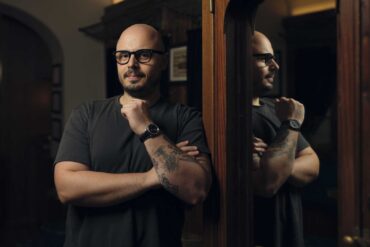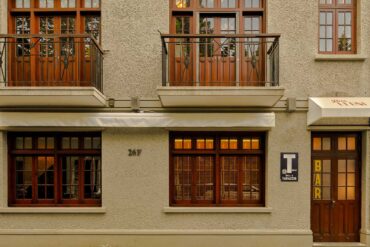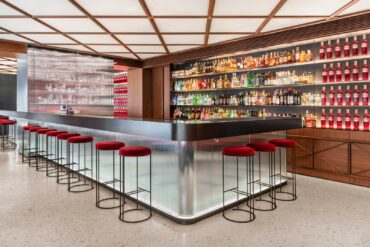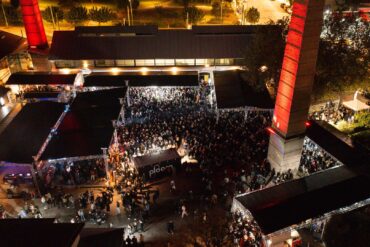“The essence remains the same: the aperitif is that stretch of time between leaving work and slipping back into the routine of home life. It’s an interlude, an opportunity to socialise and enjoy good company. Or, it can be an introspective pause. Personally, I quite like having an aperitif alone — it gives me space to think and reflect. It all depends on the circumstances. Just as the choice of drink depends on the mood: a glass of champagne or a Martini cocktail. Always accompanied by something that won’t replace dinner — olives, savoury snacks, a few appetisers. Like ours, crafted with precision by Chef Fabio Petrella. At heart, the aperitif is a simple pleasure — almost a form of therapy. More than just a ritual, it embodies a sense of ease and spontaneity. If I’m with a group, I can show up late or slip away early, and no one will mind. We, too, encourage this effortless flow, keeping only a few tables reserved. After all, a bar should be a place where you can come and go as you please.” Maurizio Stocchetto distills the essence of a ritual that has flourished in Milan, finding its natural home beneath the shade of a red awning: Bar Basso.
The Birth of Bar Basso
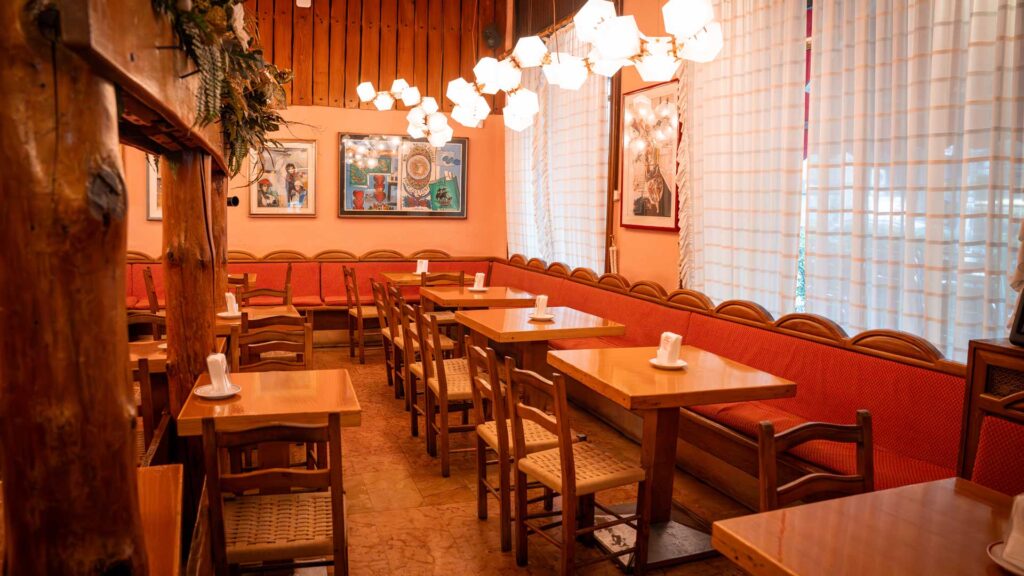
Nestled on Via Plinio, a street that, like a modern-day Moses, parts the flow towards Via Enrico Nöe, this iconic, magnetic, almost hypnotic bar remains unchanged in its allure. Now, as then. It was 1967 when Mirko Stocchetto — Maurizio’s father — alongside his trusted partner Renato Haussmann, took over the establishment from Giuseppe Basso, who had first opened its doors in Porta Vigentina in 1933 before moving it to the Lima district after the war. But this was more than just a change in ownership — it marked a decisive shift towards an international attitude, one deeply rooted in Venetian heritage. The credit belongs to the Venice-born Mirko himself.
Raised among the wooden mooring poles of Cannaregio, he started out holding the easel for a limping painter before making his way into the refined halls of the Hotel Monaco & Grand Canal. It was there that he forged a lasting friendship at Harry’s Bar with Haussmann, who later invited him to Cortina d’Ampezzo to join him at the newly opened bar of the Hotel de la Poste. The rest is history.
The Flair of Mirko Stocchetto
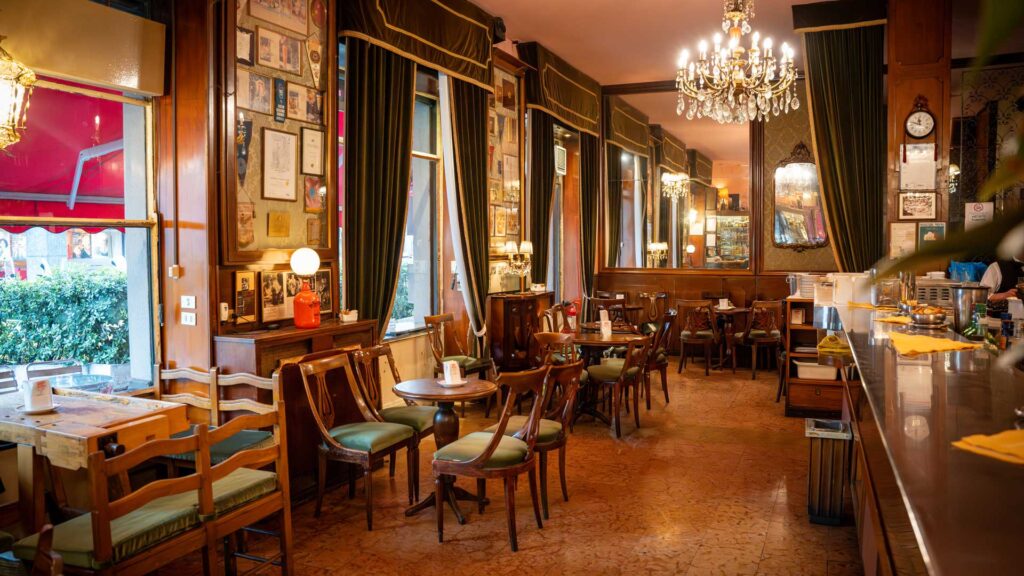
One shaped by long nights behind the bar, serving cocktails to the likes of the Agnellis and the Fürstenbergs, the Marzottos and the Barillas, Liz Taylor and Richard Burton — an entire jet set drawn to the glamour of Cortina, made all the more accessible by its small airport. “If you spend six months mixing drinks for Ernest Hemingway, you’re bound to learn a thing or two,” Maurizio Stocchetto explains. And so Mirko observed, listened, chatted, exchanged glances, absorbed atmospheres, honed his sensibility — and packed it all up. Then, he unpacked it in Milan, bringing with him the dynamic spirit of the late Sixties. “It was the era of the economic boom, of miniskirts, hippies, and long hair. Those were extravagant years. The world was shifting from black and white to technicolor,” recalls Maurizio. And Mirko — who, in 1952, joined a young AIBES (Associazione Italiana Barmen) as member number 50 — infused Milan’s days and nights with his cocktails and his unmistakable verve.
“Dad created many drinks, partly because back then, there was much more room for experimentation.” That’s how the Perseghetto was born — a twist on the Bellini with vodka, peach, and Prosecco — as well as the Rossini, an elegant blend of strawberries and Champagne, and the Mangia e Bevi, made with custard and hazelnut ice-cream, zabaglione liqueur, cherry brandy, chocolate, and strawberries.
The Birth of the Legendary Negroni Sbagliato
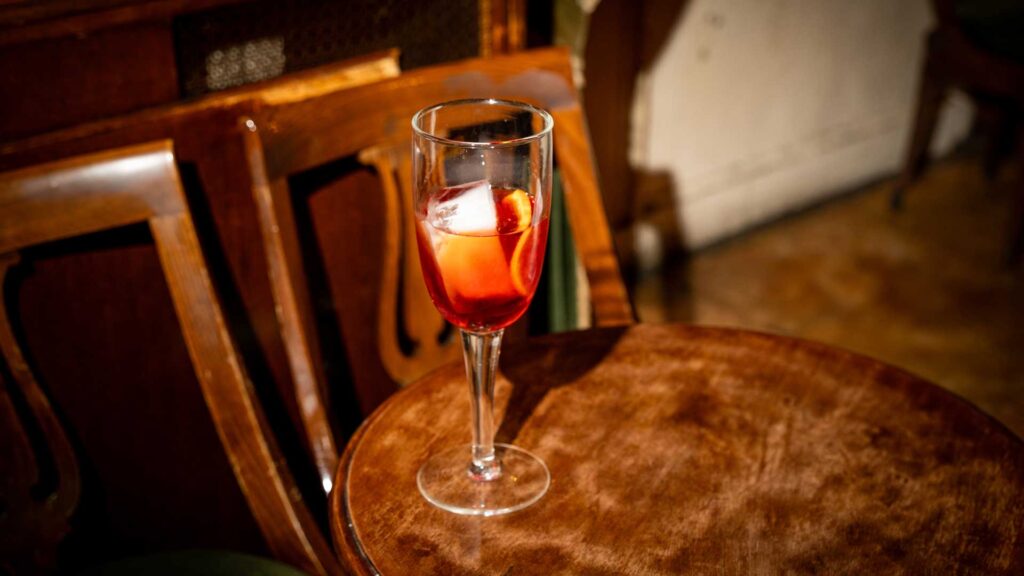
And then came the legendary Negroni Sbagliato. “If he had called it ‘Maurizio,’ it wouldn’t have been a success. But Sbagliato (mistaken’) that’s playful and intriguing. And the funny thing is, we never really pushed it. It took off on its own. What’s certain is that the Sbagliato cemented our place on the map,” admits Stocchetto junior, proudly recalling the fateful mistake, anno Domini 1972. “Dad was behind the bar, working with the refrigerated well. Inside: nine bottles. Next to it: gin, vodka, and sparkling wine. In front of him: a customer waiting for his Negroni. He grabs a glass, adds ice and an orange slice, pours in Campari and sweet vermouth, then reaches for the gin. But someone had moved the bottle. He catches the mistake but knows that hesitating now would only make things worse.
So he carries on, whispering to his guest that, on this particular spring evening, he would be serving a softer, lighter take on the classic Negroni. After all, he was used to mixing delicate, sparkling-based cocktails for the ladies. That’s how the Sbagliato was born, took off, and now thrives on social media. People order it even more today than they did back then,” says Maurizio Stocchetto, who, around the year 2000, trademarked the name, further cementing its reputation. “We want it to stay true to itself, not be cheapened, not turned into a ready-to-drink product. But we’re more than happy to see others replicating it — it means it has real value.”
A Glass for Every Cocktail, According to Maurizio Stocchetto
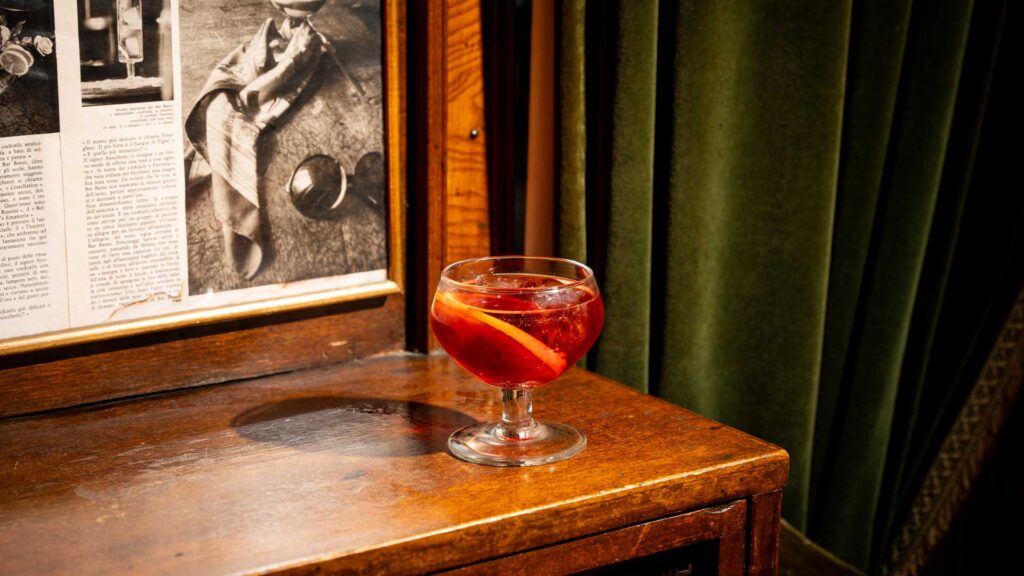
Sharp eyes, a wise heart, and a keen mind, Maurizio Stocchetto has steered Bar Basso with a steady hand since the 1980s, elevating it ever further. His natural curiosity and travels to California in the late Seventies played their part. “I wanted to see where young Americans were going, what they were drinking, what music they were listening to. They were sipping cocktails even at midday.” Meanwhile, it was also the era of a design revolution. “Friends like James Irvine would come here, along with Stefano Giovannoni.
A movement quickly formed. They brought me the crème de la crème,” he recalls, pointing to a luminous installation from the Myriad collection, crafted in blown glass and brushed copper by lighting designer Gabriel Scott for Fuorisalone 2018 — a piece now on loan, seamlessly blending with Bar Basso’s vintage soul. Here, wood murmurs to old photographs, crystal chandeliers reflect against walls in antique rose, and time stands still. “This is our identity. Nothing has changed, and nothing will. Because if cocktails are urban, frivolous, and seemingly superfluous, they are never trivial. They need a setting, a story, an atmosphere.” And, of course, they need the right glass. “We have small ones, large ones — six or seven different types, all designed by my father, back when Milan still lacked proper cocktail glassware. Our bicchierone stands 30 centimetres tall and is now displayed at the Italian Design Museum at the Triennale.”
The article first appeared on Coqtail – for fine drinkers. Order your copy here
Photo by Julie Couder




